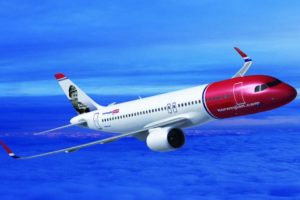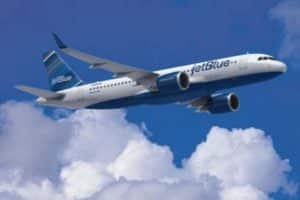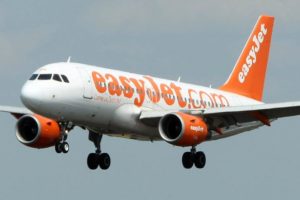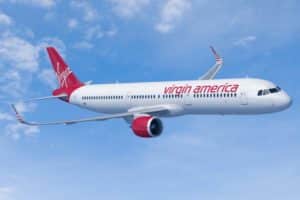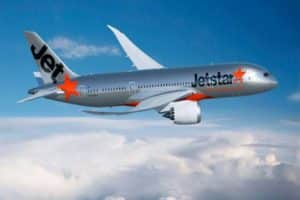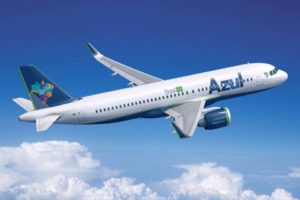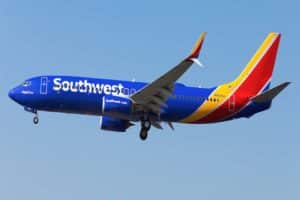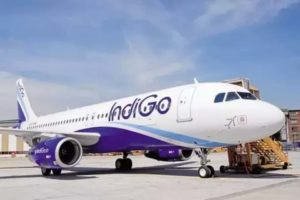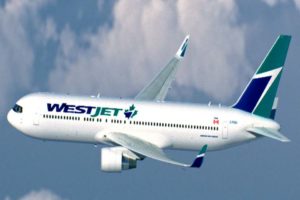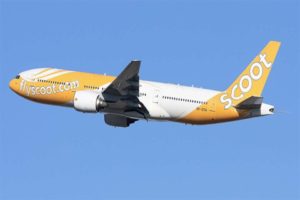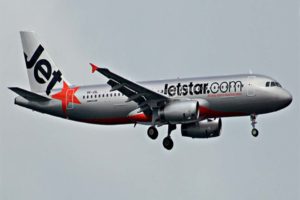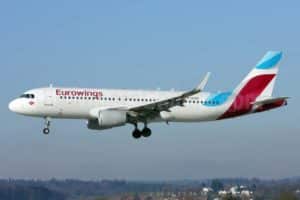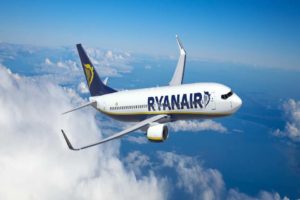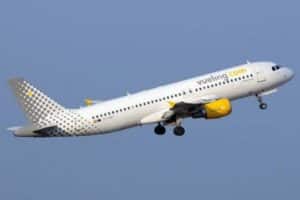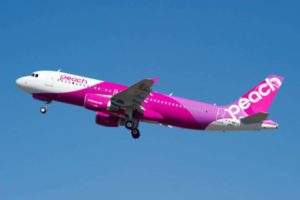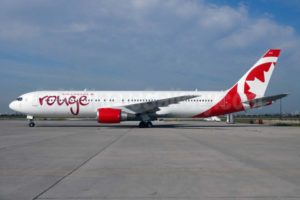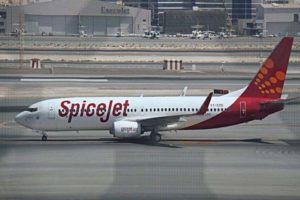Aviation
Top 20 World’s Best Low-Cost Airlines 2017

1. AIRASIA, MALAYSIA
Impressively, AirAsia is the world’s best low-cost airline for the 9th year running. Based in Kuala Lumpur, Malaysia, the airline operates an extensive network covering more than 120 destinations in 26 countries across Asia, Australia and New Zealand, the Middle East and the USA. Just 15 years ago, the airline was a failing state-owned business but was rapidly turned around by CEO Tony Fernandes.
2. NORWEGIAN AIR, NORWAY
Also voted best long-haul low-cost airline and best low-cost airline in Europe, Norwegian Air comes in second on this list. The company flies to more than 100 destinations throughout Europe, Asia, Africa, the Middle East and the USA – making headlines earlier this year when it offered one-way flights between Dublin and New York for just $90 (£69). Its planes are instantly recognizable as they each have a red nose and portraits of famous Scandinavians on their tail fins.
3. JETBLUE AIRWAYS, USA
“You above all” is the reassuring slogan of JetBlue Airways, credited with raising the standards of low-cost carriers in the US thanks to its friendly-service, satellite TV and free snacks. With headquarters in New York, the carrier has routes to 102 destinations across North, Central and South America. The company recently announced plans to remove its schedules from 11 online travel sites to encourage direct bookings, thereby cutting the commission it pays to third parties.
4. EASYJET, UK
No-frills British airline easyJet burst onto the scene in 1995, launched by self-titled ‘serial entrepreneur’ Stelios Haji-Ioannou. It’s now the second-largest airline in Europe by number of passengers, behind Ryanair, carrying around 73 million people annually. EasyJet flies to more than 100 destinations throughout Europe and North Africa.
5. VIRGIN AMERICA, USA
Virgin America prides itself on offering a top-notch service at an affordable price. Even passengers in the main cabin can expect mood lighting, snacks, power outlets, wi-fi, leather seats and video touchscreens in every seatback. Those flying in Select and First Class have more legroom and premium meals. Virgin America flies to 21 destinations across the US, plus three in Mexico.
6. JETSTAR AIRWAYS, AUSTRALIA
Jetstar Airways is based in Melbourne and promotes itself as “Australia’s No. 1 Low Fares Airline”. Founded in 2004, the company flies to destinations throughout Australia and New Zealand and also has routes to China, Japan, Vietnam, the US, Thailand, Malaysia, Fiji, Indonesia and the Cook Islands. Jetstar Airways is wholly owned by Qantas Airways, which offers a more premium service.
7. AIRASIAX, MALAYSIA
Long-haul and low-cost carrier AirAsiaX has flown over 19 million passengers since it launched its maiden flight 10 years ago. It currently serves 23 destinations across Asia, Australia, New Zealand, the Middle East and Africa. Earlier this year, founder Tony Fernandes ended speculation that the airline would return to Europe and start flying to the US, confirming the company will remain focused on Asia only.
8. AZUL LINHAS AÉREAS BRASILEIRAS, BRAZIL
Azul Linhas Aéreas Brasileiras is the latest success of co-founder David Neelemen, who also helped build JetBlue and WestJet. Founded in 2008, the São Paulo-based budget airline’s success is largely down to the fact it began by targeting under-served cities throughout Brazil. Its fleet of 125 jets now fly to more than 100 destinations throughout Argentina, Bolivia, French Guiana, Portugal, the USA, and Uruguay.
9. SOUTHWEST AIRLINES, USA
The world’s largest low-cost carrier, Southwest Airlines has more than 700 Boeing 737 jets and operates more than 4,000 flights a day in peak season. The Dallas-based airline flies to around 100 destinations across the US, South America and the Caribbean.
10. INDIGO, INDIA
New Dehli-based IndiGo is the largest airline in India in terms of passengers carried – a total of 41 million people last year. One of the fastest-growing aviation companies in Asia, it’s about to add another 400 Airbus jets to its current fleet of 100. IndiGo flies to 46 destinations, most of which are domestic, but also airports in Nepal, Oman, Qatar, Singapore and Thailand, along with Dubai and Sharjah in the United Arab Emirates.
11. WESTJET, CANADA
Launched in 1996, WestJet was originally a small regional airline but has grown to become the second-largest carrier in Canada. The cost-conscious company now flies to more than 100 destinations throughout Canada, Central America, Mexico, Europe and the Caribbean – and plans to expand into Asia and South America in the next few years.
12. SCOOT, SINGAPORE
Owned by Singapore Airlines, Scoot was launched in 2012. The company offers a no-frills, low-cost service alongside business class ‘ScootBiz’, which offers extra legroom and larger, leather seats. Scoot operates services in Singapore, Honolulu, China, Malaysia and the Gold Coast of Australia.
13. JETSTAR ASIA, SINGAPORE
Jetstar Asia, an off-shoot of Jetstar Airways, flew into the skies in 2004. A latecomer to the budget aviation market, the business differentiated itself from other airlines by traveling within a five-hour radius of Singapore, while its competitors didn’t go beyond four hours. Jetstar Asia travels to around 100 destinations across India, China, Malaysia, Thailand, Singapore, Cambodia, New Zealand and Australia.
14. EUROWINGS, GERMANY
Low-cost carrier Eurowings flies to more than 150 destinations throughout Europe as well as Thailand and South Africa. The company offers passengers three fare options for both short and long-haul flights: Basic (flight only), Smart (preferred seating, food and luggage included) and Best (premium seating and legroom, à la carte catering and in-flight entertainment). Its parent company, Lufthansa, recently bought over 81 of Air Berlin’s plane, increasing the Eurowings fleet to 210 aircraft.
15. RYANAIR, IRELAND
Dublin-based Ryanair is Europe’s largest airline in terms of passenger numbers. The company serves 34 countries throughout the continent as well as Morocco and Israel. The budget airline made the list despite cancelling thousands of flights this summer after a ‘mess-up’ in how it scheduled time off for pilots. Customer satisfaction improved from 2014 when Ryanair allowed customers two free carry-on bags. But, from January 2018, passengers will be charged for the privilege.
16. VUELING AIRLINES, SPAIN
Spain’s second-largest carrier, Vueling flies to over 160 destinations throughout Europe, Africa and Asia. The company, based in Barcelona, offers three fares: Basic, Optima (allocated seating and check-in luggage) and Excellence (front row, allocated seating, priority boarding, larger luggage allowance). The airline flew 2 million passengers in the UK during the summer 2017, an 8% increase from the summer season of 2016.
17. TIGERAIR, SINGAPORE
Tigerair Singapore merged with Scoot in July 2017 and now operates under that name, but before all this it was voted the 17th best low-cost airline in the world. The economy service continues to operate flights throughout southeast Asia, Bangladesh, China and India. (This entry does not refer to Tigerair Australia, which is a different operation entirely.)
18. PEACH, JAPAN
Japanese airline Peach operates 14 domestic routes and flies to 15 international destinations across Hong Kong, China, Thailand, Taiwan and South Korea. Passengers can chose between three fares: Simple, Value and Prime, with the more expensive options offering allocated seats, additional legroom and bigger luggage allowances.
19. AIR CANADA ROUGE, CANADA
A low-cost subsidiary of Air Canada, Air Canada Rouge began operating in 2013 with just four aircraft. The company now has 49 planes and flies to more than 90 popular destinations throughout Canada, Europe, the Caribbean, South America and the USA. The airline is currently in the process of adding high-speed wi-fi to its entire fleet. All Airbus 319s will be equipped by spring, followed by its Airbus 321s and Boeing 767s later in 2018.
20. SPICEJET, INDIA
In 2014, Indian airline SpiceJet was about to fold – and was even forced to cancel 2,000 flights because it couldn’t afford to pay for oil. Its fortunes changed when chairman Ajay Singh took over and it’s now the third-largest carrier in the country. SpiceJet now operates more than 300 flights to 55 destinations throughout India, China, Thailand, Saudi Arabia, the United Arab Emirates, Afghanistan, Nepal and Sri Lanka.

Aviation
Can Airline Seat Cushions Be Used As Life Jackets?

In the event of an aircraft ditching into water, there’s a common question: Can aircraft seats serve as an alternative to life jackets for flotation? The answer lies in understanding their respective functions.
While seat cushions can provide some buoyancy in water, they are not intended nor certified to function as life jackets. Their primary purpose is to offer cushioning for passengers during flight. On the other hand, life jackets are meticulously engineered to keep individuals afloat in water, equipped with buoyancy materials, secure straps, and reflective elements for visibility. They offer numerous advantages over mere cushions.
While a seat cushion might offer temporary assistance in staying afloat, it’s not a dependable substitute for a proper life jacket during an emergency. It’s crucial to utilize approved safety equipment when near bodies of water. A life jacket, designed to keep a person buoyant for extended periods, offers the rigidity needed for prolonged flotation and allows for easy movement of the arms to navigate effectively.
What fabric is used in aircraft seats?
Seats are meticulously designed to fulfill multiple purposes, ensuring passenger comfort, safety, and protection from unforeseen circumstances like fires and accidents. A typical design incorporates an aluminum frame with blocks of polyurethane foam affixed to it. Additionally, a layer of fire-resistant fabric, such as Kevlar or Nomex, is often applied over this framework, topped with a layer of cloth or leather.
Leather seats, while luxurious, are more expensive compared to traditional cloth seats. The majority of fabrics used in seat upholstery contain at least 90% wool fiber, with the remainder typically consisting of polyamide (nylon). Wool stands out as the primary fiber chosen for commercial airline seating fabric due to its desirable properties and suitability for such applications.
What is the lightest economy seat?
In recent times, airlines have been downsizing seat dimensions to accommodate more passengers, resulting in reduced cushion length and leg space. This contrasts with earlier times when airlines offered more generously cushioned seats and ample amenities.
According to Recaro Seats Company, their SL3710 model represents the lightest economy class seat available, weighing in at a mere 8 kg (17.6 lb.), setting a new standard in aircraft seating.
For individuals weighing more than 350 pounds, fitting into a standard economy-class seat can be a challenge due to the narrower dimensions. Economy seats, also referred to as “coach,” “standard,” or “main cabin” seats, typically range from about 40 to 48 centimeters in width, further emphasizing the need for more accommodating seating options.
Aviation
Does airline food have more salt? Here is the answer.
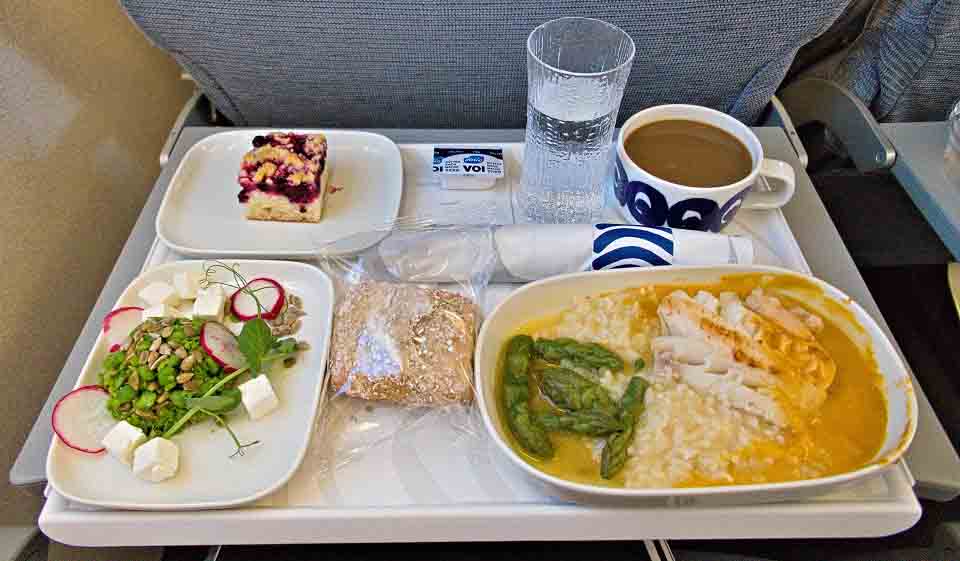
Whenever you fly with an airline, you often notice that the taste of the food is different from what you’re accustomed to on the ground. While passengers sometimes prioritize the food experience, have you ever wondered why airline food tends to be saltier? Let’s delve into this in the video.
Airline food has 15% more salt
One of the main challenges for chefs crafting meals served on airplanes is ensuring they are flavorful for passengers. To achieve this, chefs typically add more salt and seasoning, roughly 15% more salt is used, given that our taste buds are less sensitive by about 30% when we’re airborne.
The Role of Sodium: Sodium is a key ingredient used to enhance flavor, especially in the air where our senses can be dulled. On average, airline meals contain over 800mg of sodium, exceeding 40% of the daily limit recommended by the World Health Organization.
Altitude Alters Perception
Flavors are perceived differently at higher altitudes due to the dry cabin air and low humidity levels, which can diminish our ability to taste and smell. To compensate, airline chefs amp up the salt and seasoning to elevate the food’s taste.
Airline’s food Preservation:
Airline meals are prepared in advance and stored, necessitating longer preservation times. Salt serves as a natural preservative, ensuring the food maintains its quality and safety during storage and transportation.
However, excessive salt intake can pose health risks such as high blood pressure and dehydration, particularly problematic during air travel. Therefore, it’s crucial for airlines to strike a balance between flavor enhancement and maintaining a healthy sodium level in their meals.
An Indian content creator and food analyst discovered that the Indian-based carrier, IndiGo Airlines, incorporates higher levels of salt into its meals compared to standard food practices. According to him, “Many of us are aware that Maggi is high in sodium! What most don’t realize is that IndiGo’s Magic Upma contains 50% more sodium than Maggi, IndiGo’s Poha boasts approximately 83% more sodium than Maggi, and even Daal Chawal matches Maggi’s sodium content.”
Airlines
Why Don’t Airplanes Fly Over the Pacific Ocean?

Flights do indeed fly over the Pacific Ocean, but the routes they take are often determined by factors such as airline policies, air traffic control decisions, and weather conditions. The Pacific Ocean is one of the largest bodies of water on Earth, and it’s regularly crossed by numerous flights traveling between North America, Asia, Australia, and other destinations.
However, some specific routes might avoid flying directly over certain parts of the Pacific Ocean for various reasons. For example:
- Safety and emergency considerations: While modern aircraft are equipped with advanced safety features, airlines, and pilots may prefer routes that keep them closer to potential diversion airports or within range of search and rescue facilities in case of emergencies.
- Air traffic control restrictions: Airspace management authorities may impose certain restrictions or preferred routes for managing air traffic efficiently. These restrictions could be based on factors such as military operations, airspace congestion, or diplomatic considerations.
- Weather conditions: Pilots and airlines consider weather patterns when planning routes. While the Pacific Ocean generally experiences fewer weather-related disruptions compared to other regions, factors like turbulence, thunderstorms, or tropical cyclones can influence route selection.
- Managing Cost Factors: In route planning, airlines have to take fuel prices, maintenance costs, crew charges, and other operating costs into account. Direct routes over the Pacific Ocean may be more cost-effective for shorter distances, but they may also necessitate extra safety precautions, including carrying more fuel for longer overwater operations.
- Remote Locations and Navigational Challenges: The Pacific Ocean’s vastness poses navigational issues, particularly for aircraft operating over isolated regions with few ground-based navigational aids. For precise positioning and route direction, pilots must mostly rely on satellite-based technology and onboard navigation systems, which may necessitate additional training and equipment purchases.
- Lack of Suitable Landing Options in the Pacific Ocean: Unlike regions with dense air traffic and numerous airports, the Pacific Ocean has vast stretches of open water with few suitable landing options in case of emergencies. While long-range aircraft are equipped with safety features like life rafts and emergency locator transmitters, the lack of nearby airports can increase the time it takes for rescue and recovery operations to reach distressed aircraft, posing additional risks to passengers and crew. Therefore, flight routes may be planned to ensure proximity to potential diversion airports or alternate landing sites in case of unforeseen circumstances.


